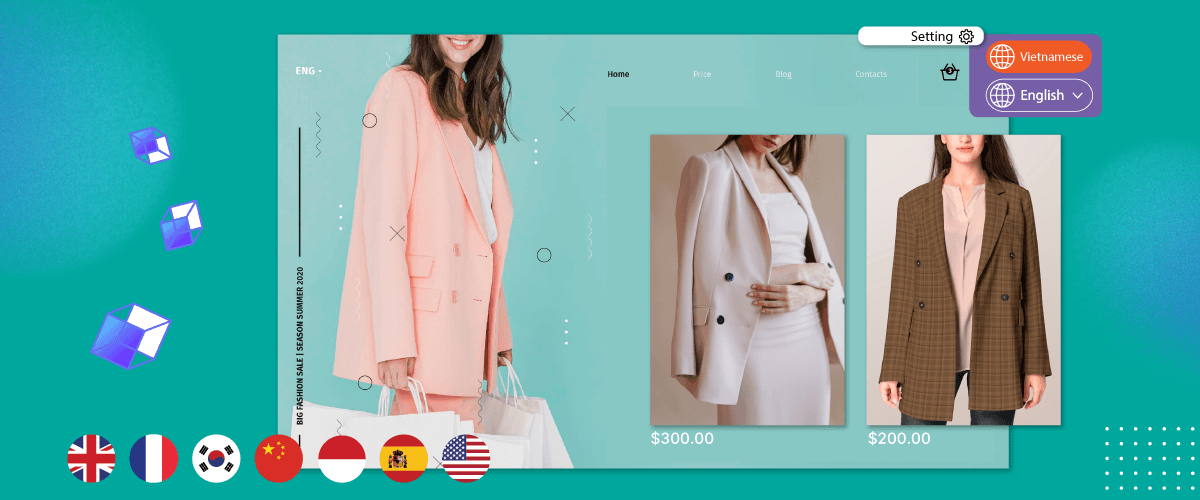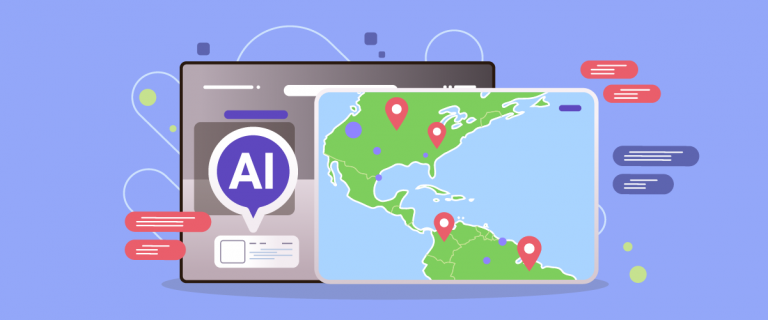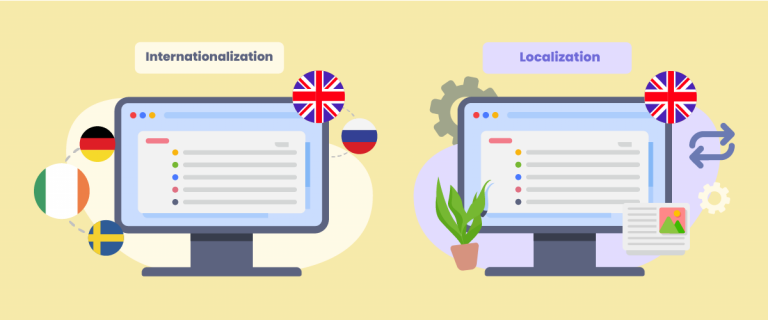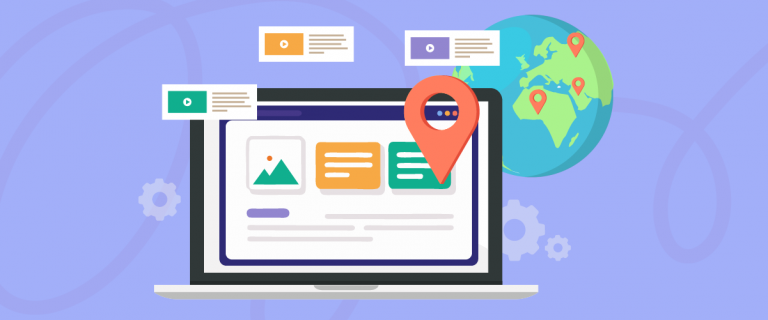Do you want to expand abroad and get more buyers? Building a multilingual eCommerce store is one of the best things you can do.
According to a recent report from PYMNTS nearly half of the top 50 eCommerce sites or 46% of them now support 4 or more languages to reach international buyers and expand reach.
Therefore, it is important for you to build a multilingual eCommerce store to help expand your market reach, which will help increase sales. So, in this article we will discuss together how to build a mutlilingual eCommerce store complete with recommendations for translation services to use.
Why you should build multilingual eCommerce store?
- Expanded global reach: By offering your eCommerce store in multiple languages, you can reach a broader audience across different countries and regions. This allows you to tap into new markets and attract customers who prefer to shop in their native language.
- Improved user experience: Providing a localized experience to your international customers enhances their overall shopping experience. When your website is available in their preferred language, customers can navigate, understand product information, and make purchases more easily. This leads to higher customer satisfaction and increases the likelihood of repeat purchases.
- Increased sales and conversions: When customers can access your eCommerce store in their native language, it builds trust and credibility. They are more likely to engage with your products, understand pricing, and complete the purchasing process. This can result in higher conversion rates and increased sales, especially among non-English-speaking customers.
- Competitive advantage: Offering a multilingual eCommerce store can give you a competitive edge in the global market. Many businesses overlook the importance of language localization, so by investing in multilingual capabilities, you differentiate yourself from competitors and position your brand as more accessible and customer-centric.
- Enhanced SEO and organic traffic: Translating your eCommerce store into multiple languages can improve your search engine visibility in different markets. When you optimize your content for local keywords and provide relevant localized information, it increases the chances of ranking higher in search results for those specific languages. This can drive organic traffic and attract targeted customers to your store.
- Better customer support: Multilingual eCommerce stores enable you to provide customer support in multiple languages. This allows you to address customer inquiries, provide assistance, and resolve issues more effectively, fostering better customer relationships and loyalty. It’s important to note that reaching a bigger audience means you must be ready for higher engagement. For this, we recommend using a customer relationship management tool – one of our favorite is a WhatsApp CRM.
How to build multilingual eCommerce in 9 steps
Now you know the list of CMS that can be used and do you know which one you want to use? Well, now is the time for us to start building multilingual eCommerce steps in 9 steps. Pay attention to each of the following steps.
Step 1: Choose your CMS eCommerce
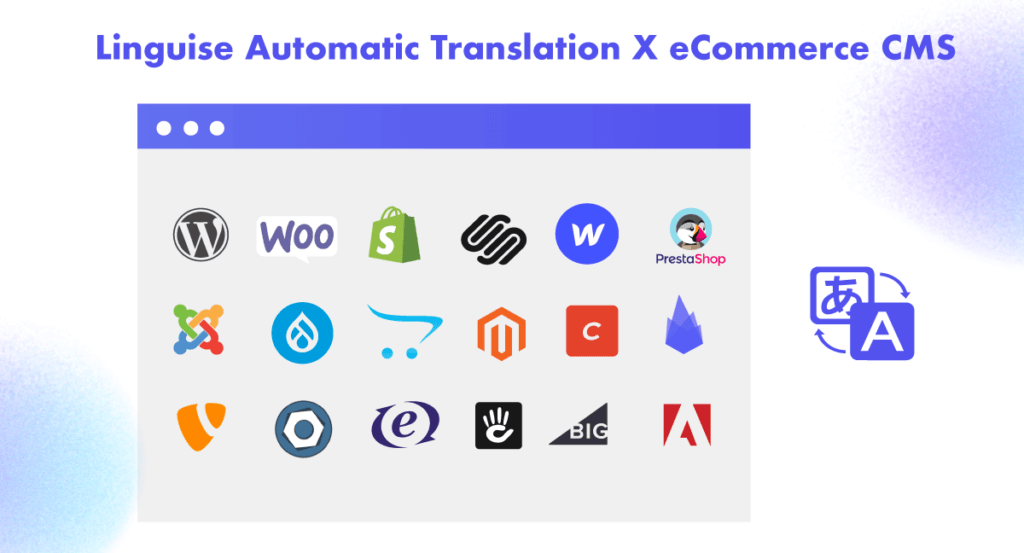
There are several platform options you can use as the basis for your online store. Generally, these platforms can be divided into three categories.
- E-commerce platform solutions: Platforms like Shopify, OpenCart, Magento, and Prestashop fall into this category. It’s relatively easy to use, but there is a license to pay for and it can be difficult to add features like blogging.
- CMS (Content Management System): Platforms do not directly include e-commerce features, but you can customize them to suit your needs. You can even edit your own site code and have many customization options. Example of CMS like WordPress (WooCommerce), Joomla, and Drupal.
- Website builders with sales functionality: These include platforms like Squarespace, Webflow and Wix. They are easy to use, but can be expensive and may have limitations in terms of customization.
No matter which platform, CMS, or builder you choose, Linguise supports seamless integration. It ensures that you can easily implement multilingual capabilities into your website regardless of your chosen solution.
To learn more about Linguise’s integration with specific CMS platforms, you can visit their website at Linguise integrations. There, you will find detailed information and instructions on how to integrate Linguise with various CMS platforms, enabling you to create a multilingual website that caters to a global audience.
Then, in this tutorial we will try to use WordPress to build a multilingual eCommerce store.
Step 2: Set up your eCommerce
After choosing a platform, whatever platform you choose, the next step is to set up your eCommerce. Some short steps you have to do are:
- Choose a hosting provider for your eCommerce website.
- Register a domain name that matches your brand or business name.
- Install WordPress, this is usually included when purchasing hosting.
At this point, you already have your own website which is still empty and we will organize it together.
Step 3: Choose plugin eCommerce
WordPress is a platform that provides tens of thousands of supporting plugins for building websites, one of which is for eCommerce. This time we will use the WooCommerce plugin.
Install the plugin and configure some things via the Settings menu. In this menu there are several submenas such as product, shipping, payment, account, email, integration, and others.
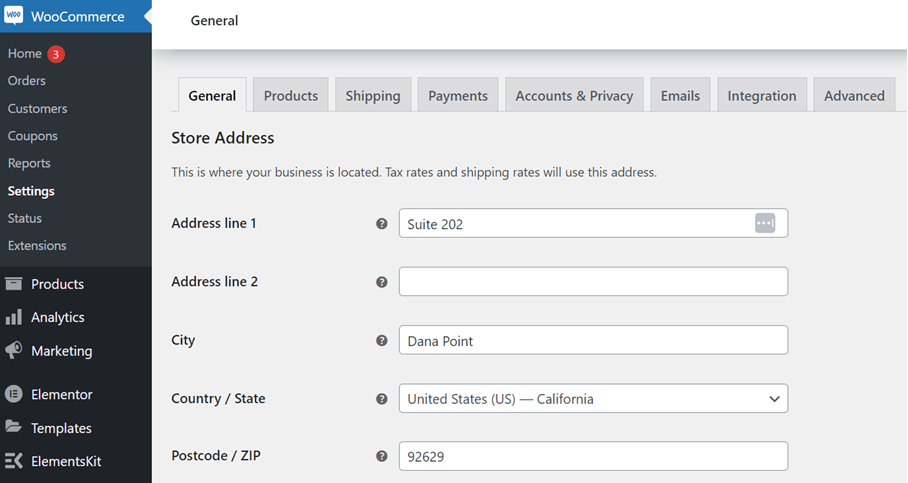
Step 4: Add products to your eCommerce
After the settings are complete, then add products to your eCommerce, click Products in the left navigation then click Add New. Here you need to enter some product information such as description, price, image, stock, and much more. After that, click Published then create the number of products you want to sell.
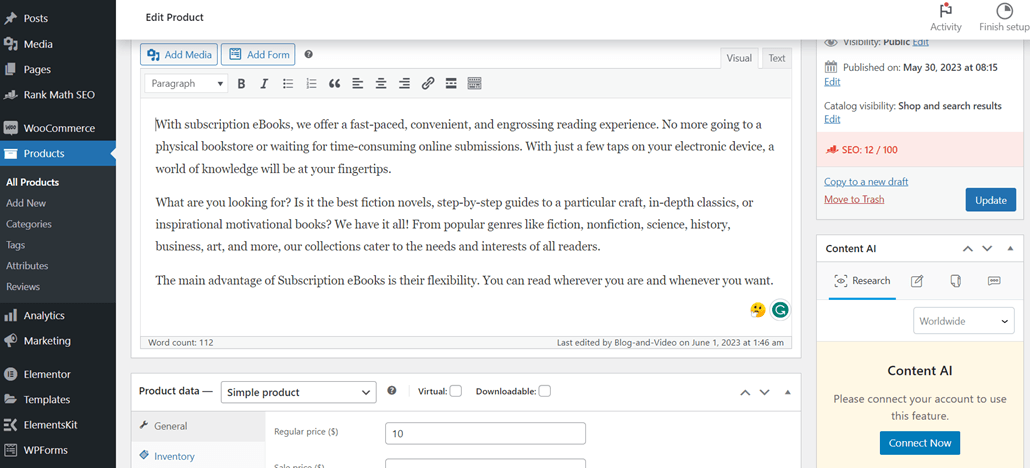
Step 5: Install plugin translation
When all the products have been added and the eCommerce settings have been completed, it is time to install the translation plugin. There are many translation plugins in WordPress, although very few are able to translate automatically quickly.
Linguise is an automatic translation that can do this, so we will install Linguise on WordPress. On the Plugins menu > Add New > Linguise > Install > Activate.
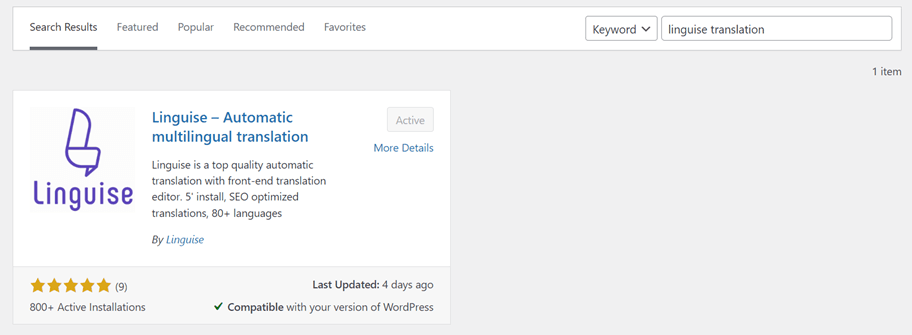
Step 6: Register Linguise account
After installing the Linguise plugin on WordPress, you cannot immediately translate because you need to register a Linguise account first to get the API key.
Register a free Linguise account on the Linguise dashboard then add your eCommerce site domain and fill in the following information. Don’t forget to fill in the PLATFORM column according to the CMS used.
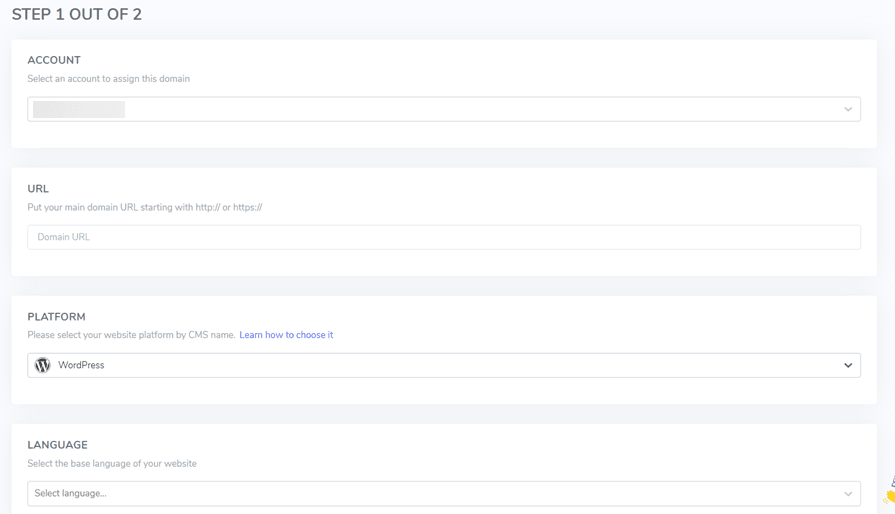
After that, you will get an API key which you will have to copy into WordPress or another CMS that you use.

Step 7: Activate API key Linguise
Then open the WordPress dashboard again and paste the API key in the following column and click APPLY.

Step 8: Set up language flags display
The final step you need to set the language switcher and flag display which will later be displayed on your eCommerce website page. This setting can be done via CMS directly or Linguise.
We will do this via the Linguise dashboard > Settings > Language flags display. Here you can set the position, list display, short name or language name.
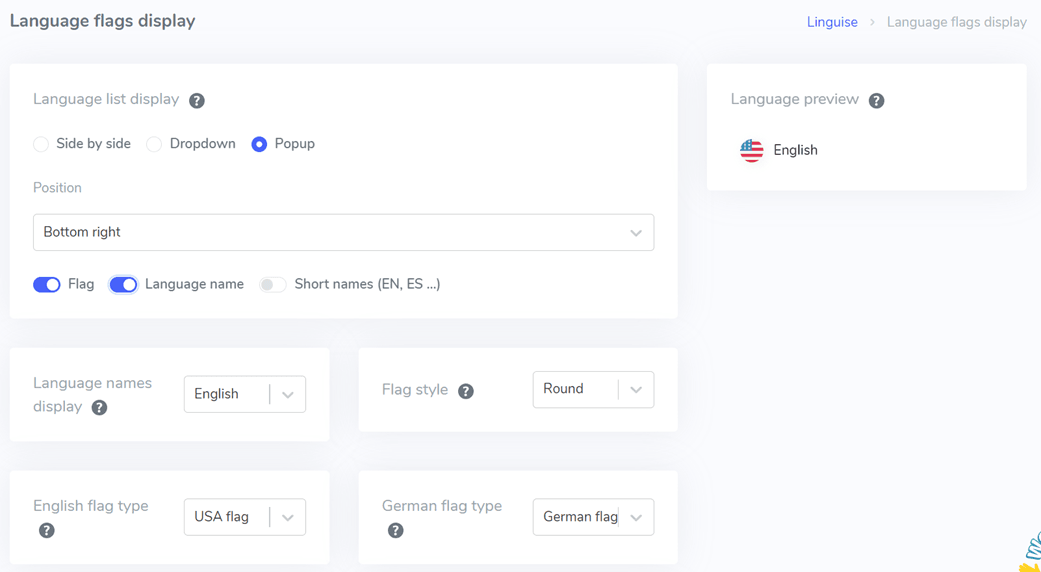
Step 9: Translate your multilingual eCommerce
So, at this point you have done all the steps, now it’s time to see the results of the mutlilingual eCommerce store and try translating them.
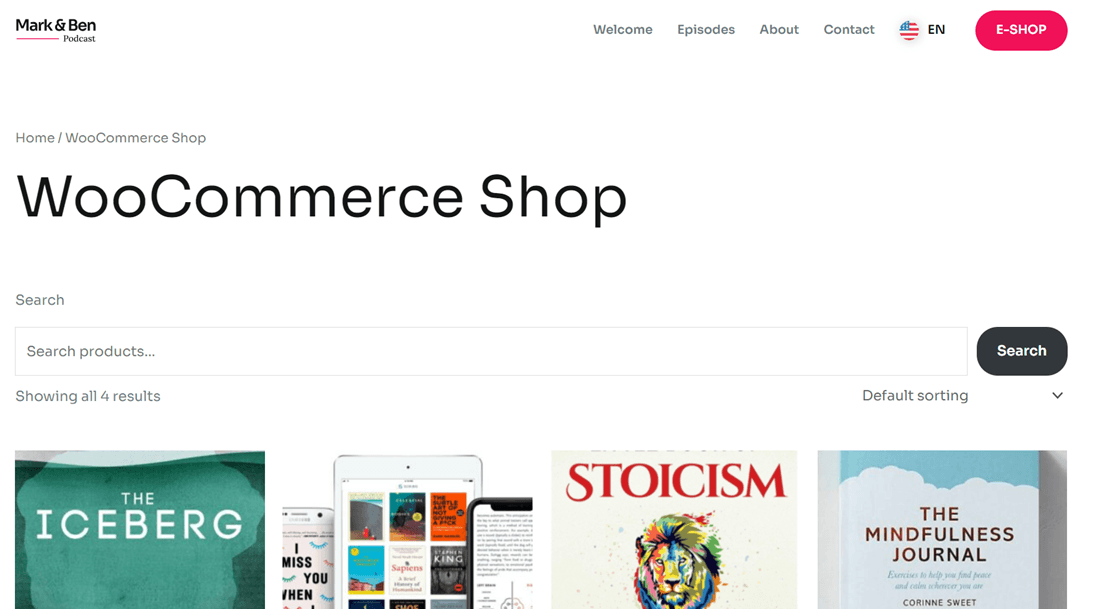
After that, we try to translate it into German, for example. So this is the result.
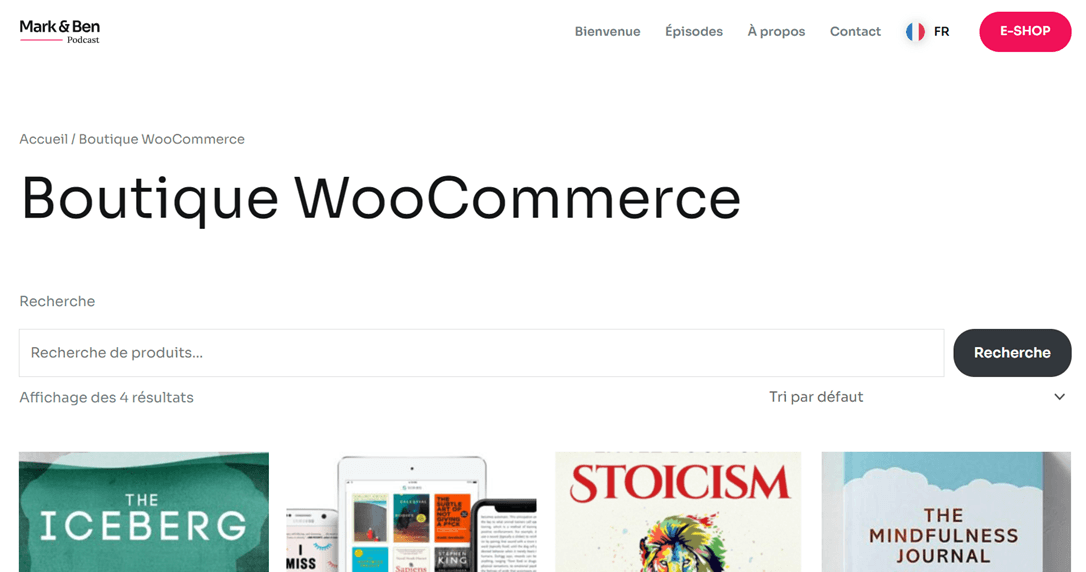
How, is it really easy to build a multilingual eCommerce store? The steps above will not be much different if you use another CMS platform.
Tips to improve your multilingual e-Commerce website
Here are some tips for improving your multilingual e-commerce site to make it easier to reach a wider market.
- Accurate and professional translations: in addition to being automatically translated, ensure that your website content is translated accurately by professional translators who are fluent in the target language. Avoid relying entirely on automatic translation tools, as they can result in inaccurate or clunky translations.
- Easy-to-use language switcher: Implement an easy-to-use language selector on your website, allowing visitors to easily switch between different language options. Make sure the language selector is clearly visible and used.
- Cultural adaptation: taking cultural nuances into account and adapting website content, images and product descriptions to attract the attention of the target audience. This includes understanding local preferences, customs and cultural sensitivities.
- Currency and pricing localization: Display prices and currency in local format to provide a seamless shopping experience. Remembering to implement a currency conversion function so that customers can see prices in their preferred currency.
- SEO optimization for each language: Optimize your website’s multilingual SEO for each language to increase visibility in search engine search results. Conduct keyword research and optimize metadata, URLs and content for relevant keywords in each target language.
- Customer support in multiple languages: Provide customer support in the languages spoken by the target audience. This can include live chat service, email support, or multilingual telephone support to answer customer questions effectively.
Localized product descriptions: Tailor your product descriptions to meet the language and cultural preferences of your target audience. consider local terminology, measurements used, and regional variations in product use or preferences.
Example best multilingual eCommerce store
For those of you who need inspiration for examples of mutlilingual websites eCommerce stores, below we have several examples that you can use as a reference.
Retrock
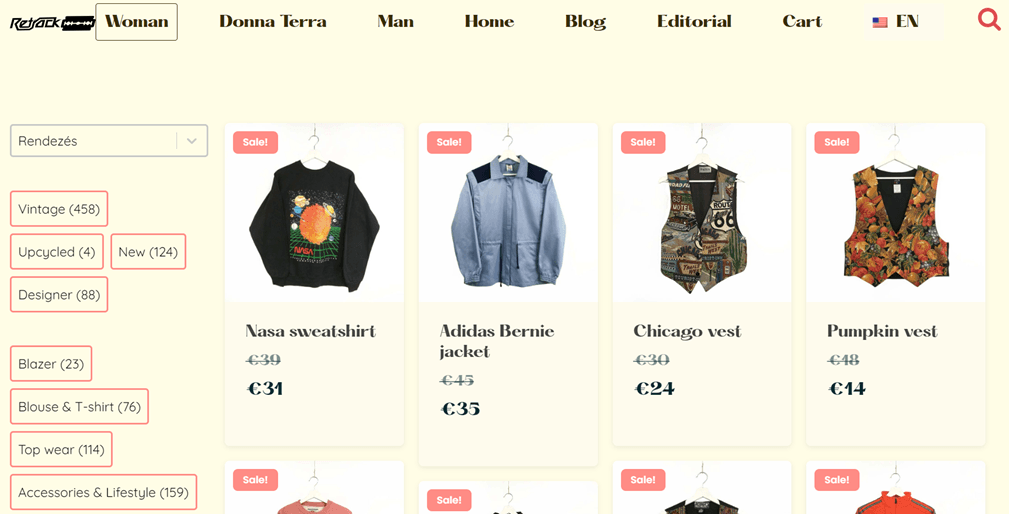
Retrock, a renowned vintage clothing store in Budapest, Hungary, has expanded its reach internationally by offering their website in both English and Hungarian languages.
Visitors are given the freedom to choose their desired language through an easily accessible language switcher in the main navigation menu.
With this approach, Retrock has successfully ensured that their website provides a seamless and engaging shopping experience to their customers worldwide.
Edgard & Cooper
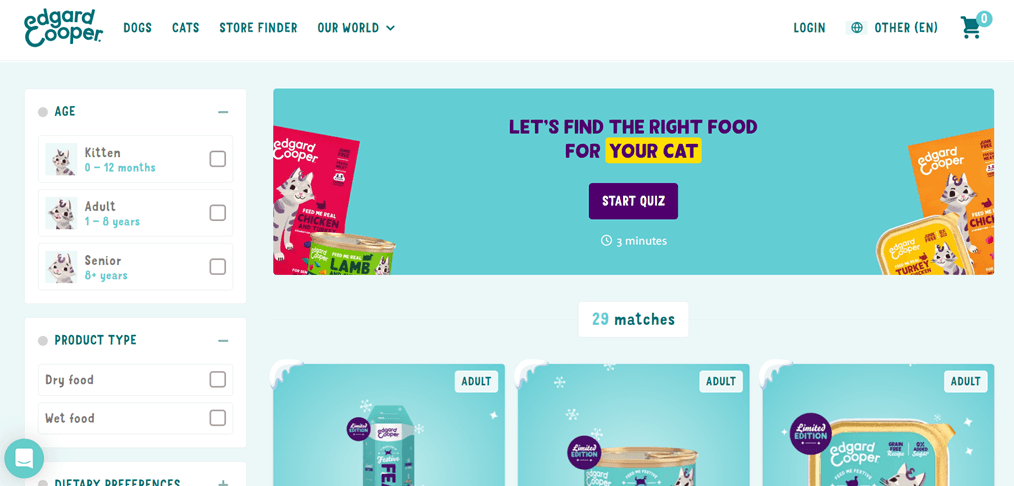
The next multilingual website comes from Edgard & Cooper, built on Shopify in 2014. Edgard & Cooper specializes in selling delicious and healthy dog and cat food made from natural ingredients, including fresh meat, fruits, and native vegetables.
Visitors can easily switch the website’s default language from English to one of the six other available languages, thanks to a user-friendly language switcher. Some of the available languages include English, Dutch, French, German, Italian, and Spanish.
To change the language, you can select it in the top right corner, and you also have the option to change the country where you are located.
Etsy

Etsy, an online platform specializing in selling handmade goods, has achieved global expansion by offering their website in various languages, including English, German, Spanish, French, and more, which can be found in the Regions menu at the bottom.
Additionally, users have the ability to set their preferred currency to view location-specific information. Etsy’s localization options are clearly visible through the settings image displayed above.
Through these methods, Etsy has successfully ensured enhanced user engagement and a more comprehensive shopping experience through diverse multilingual approaches.
Build multilingual eCommerce & translate with Linguise to expand your reach!
Now that you know how to build a multilingual eCommerce store, to perfect translation quality to 97%, don’t forget to use Linguise. With Linguise, you can easily translate your website into more than 85 languages, ensuring your products and services are welcomed by customers all over the world.
You know? We also support all popular CMS such as WordPress, Magento, and Shopify for your multilingual e-commerce website. With our support, you can easily integrate multilingual functionality into the CMS platform you use. So don’t worry about the CMS or platform you use.
You can quickly translate pages, blog posts, product descriptions and other elements into the desired language. So, don’t limit your business to just one language – take advantage of multilingual capabilities and open new opportunities for growth and success in the global marketplace. Start building your multilingual eCommerce presence by signing up for Linguise now!

